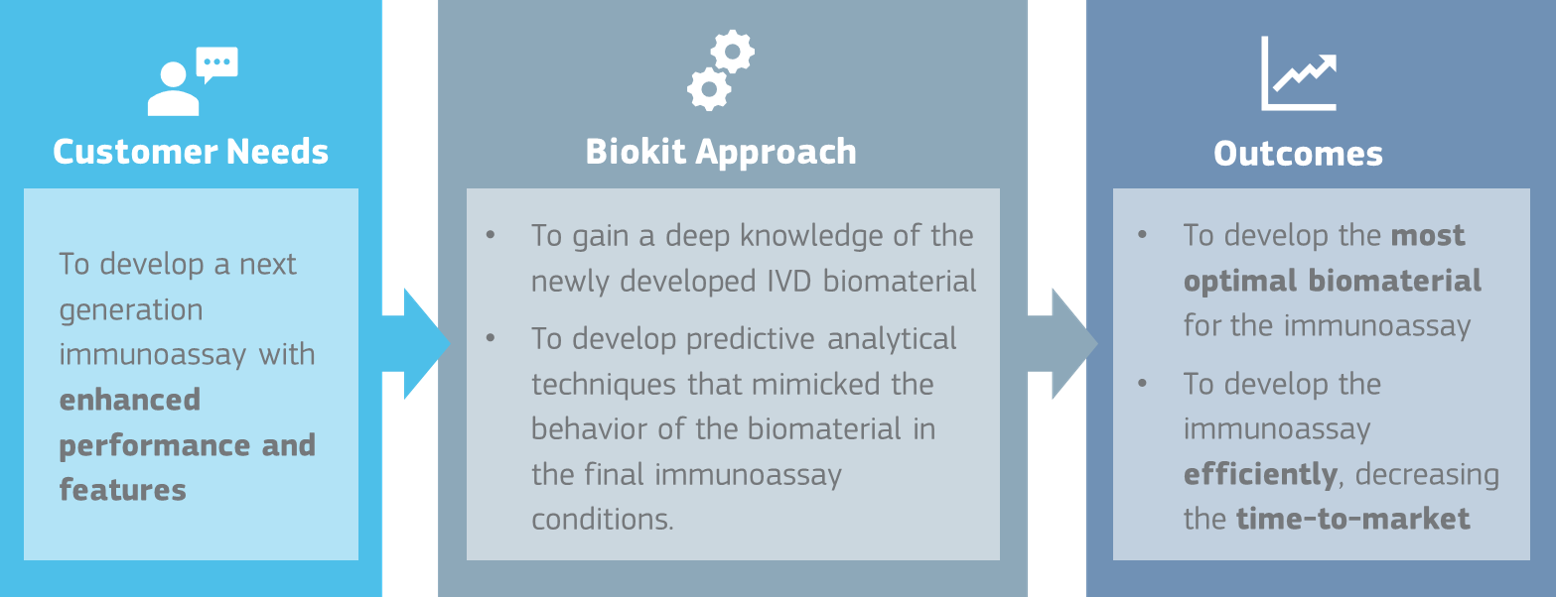
News OEM
IVD Biomaterial Characterization to streamline your Assay Development
May 5, 2020 - Spain

A greater knowledge about the IVD biomaterial reduces the risk in the immunoassay development
When developing a new immunoassay,having a deep knowledge of the IVD biomaterial helps to optimize R&D resources. And what’s more, it helps reduce the risk in later stages of the project, where significant commitments are made and the cost of responding to unexpected events increases exponentially.
At Biokit, we are aware of this chanllenge, and this is the reason why our biotechnology and assay development teams are working together from the inception of a new project.
With Biokit, you can rely on our experience in new IVD biomaterial and immunoassay development to optimize your new IVD immunoassay developments.
Our approach
At Biokit we were working for one of our partners in the development and manufacturing of an update of one existing IVD immunoassay. The goal was to improve both, its performance and features, and the main tool considered to accomplish it was the development of a new IVD biomaterial.
In order to gain in-depth knowledge of this new IVD biomaterial, our Biotechnology and Assay Development R&D teams worked together, developing predictive analytical techniques that mimicked the behavior of the biomaterial in the final immunoassay conditions.

Outcomes
One of the challenges that we face when testing a new IVD biomaterial in an IVD immunoassay is the stability of the reagent with the selected formulation. The obtained results using the predictive analytical techniques that we developed showed that when simulating the immunoassay conditions, the new IVD biomaterial was not stable under certain thermal conditions. However, the new IVD biomaterial was stable as standalone when using the basic VD biomaterial testing.
Having an in-depth knowledge of the new IVD biomaterial allowed us to quickly identify the origin of this lack of stability, avoiding further unfruitful testing for our partner resulting in added R&D resource spending on non-optimal biomaterial generation, and avoiding unproductive assay development efforts to stabilize the immunoassay. Therefore, we can conclude that a greater knowledge of the IVD biomaterial leads to a more efficient immunoassay development and a decrease in the time-to-market.
NEWS
Latest News
Please contact us directly via telephone or with the following form.
Tel. +34 93 860 90 00

